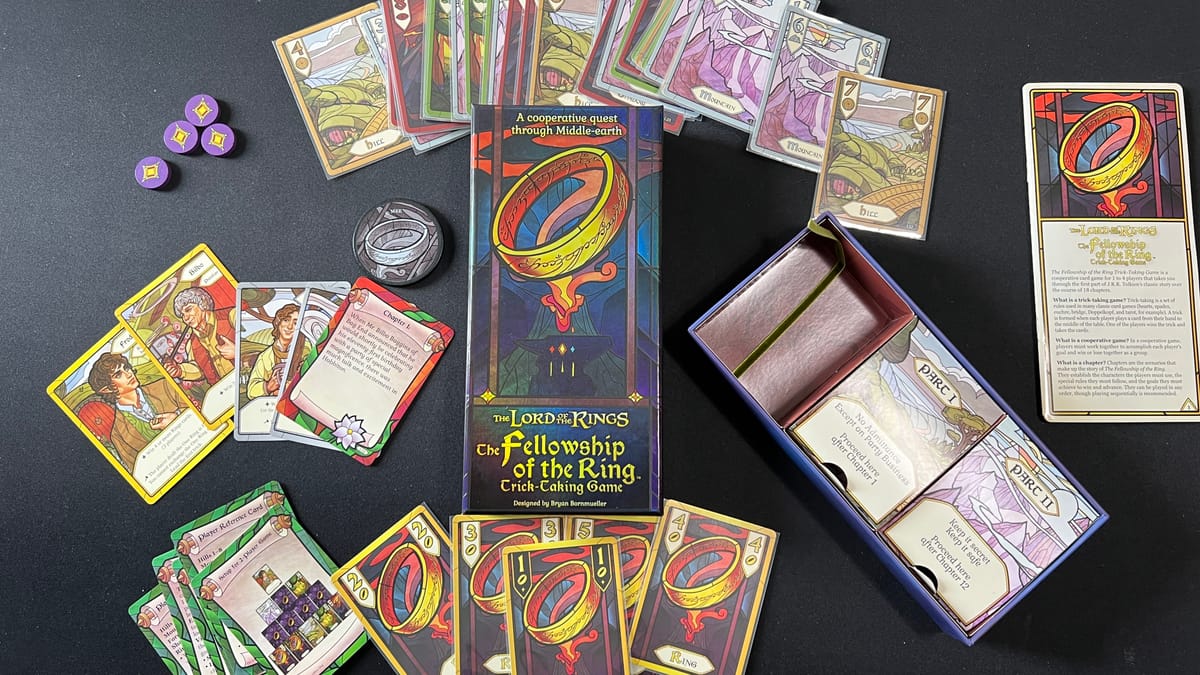
While writing this review, the Extended Edition of the Lord of the Rings: Fellowship of the Ring is playing in the background and I am currently wearing a Lord of the Muppets sweatshirt. As I glance to my side, I see my collection of the Lord of the Rings TCG and an illustrated copy of the Hobbit that was given to me by my wife. The Lord of the Rings has always held a special place in my heart since, as a child, I entered the world that JRR Tolkien created. One might say that I am a fan. That being said, I am pretty critical of the world when adapted into another medium, and I can safely say that The Fellowship of the Ring: Trick-Taking Game is a worthy entry into the pantheon of Lord of the Rings games.
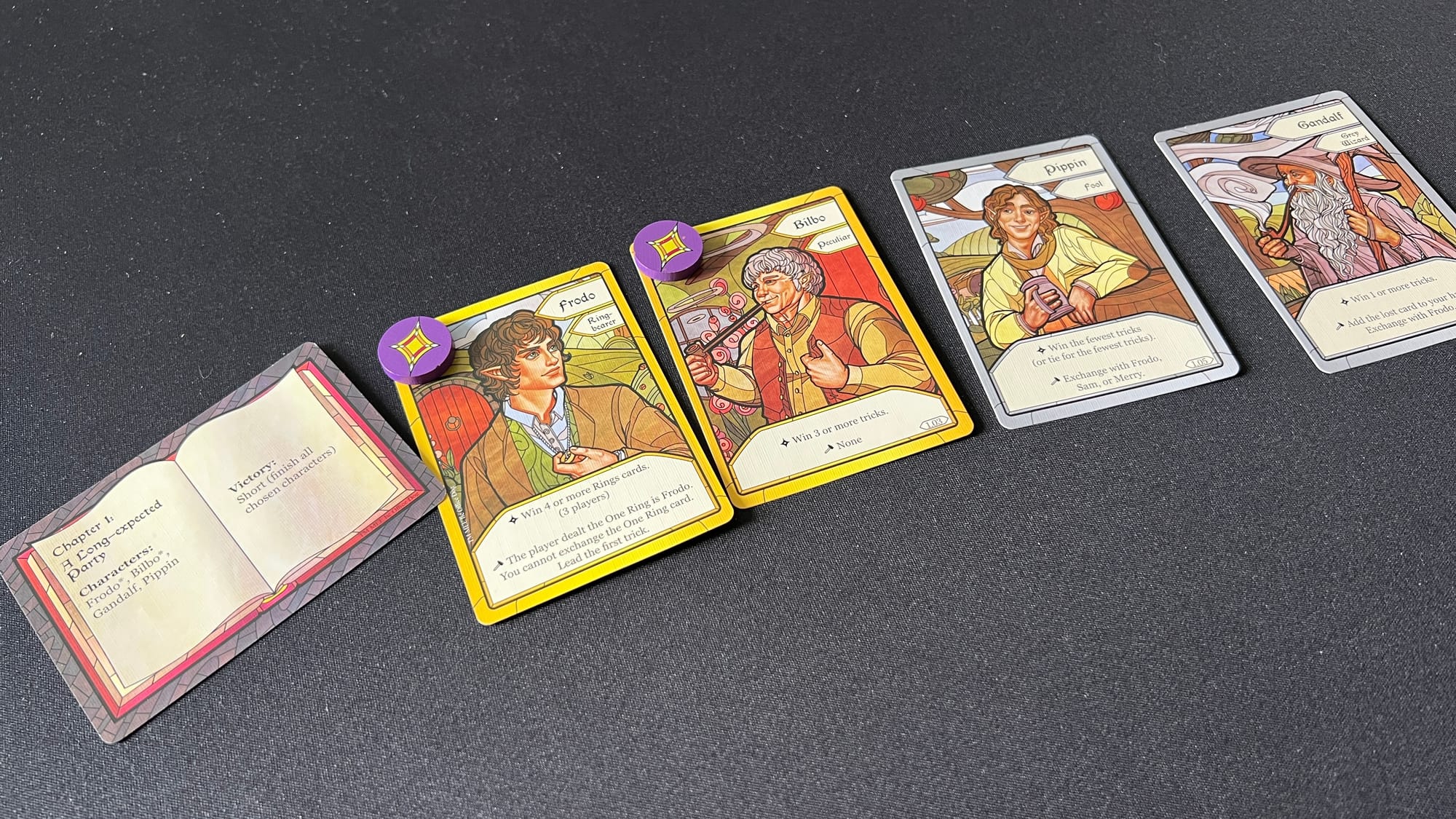
The Fellowship of the Ring: Trick-Taking Game comes to us from publisher Office Dog and designer Bryan Bornmueller. The game is divided into 18 different chapters and can be played by 1-4 players. In each chapter, players are treated to a new narrative from the original book, and take control of characters who each have different win conditions and set-ups. If all players can collectively achieve each win condition, they will complete the chapter.
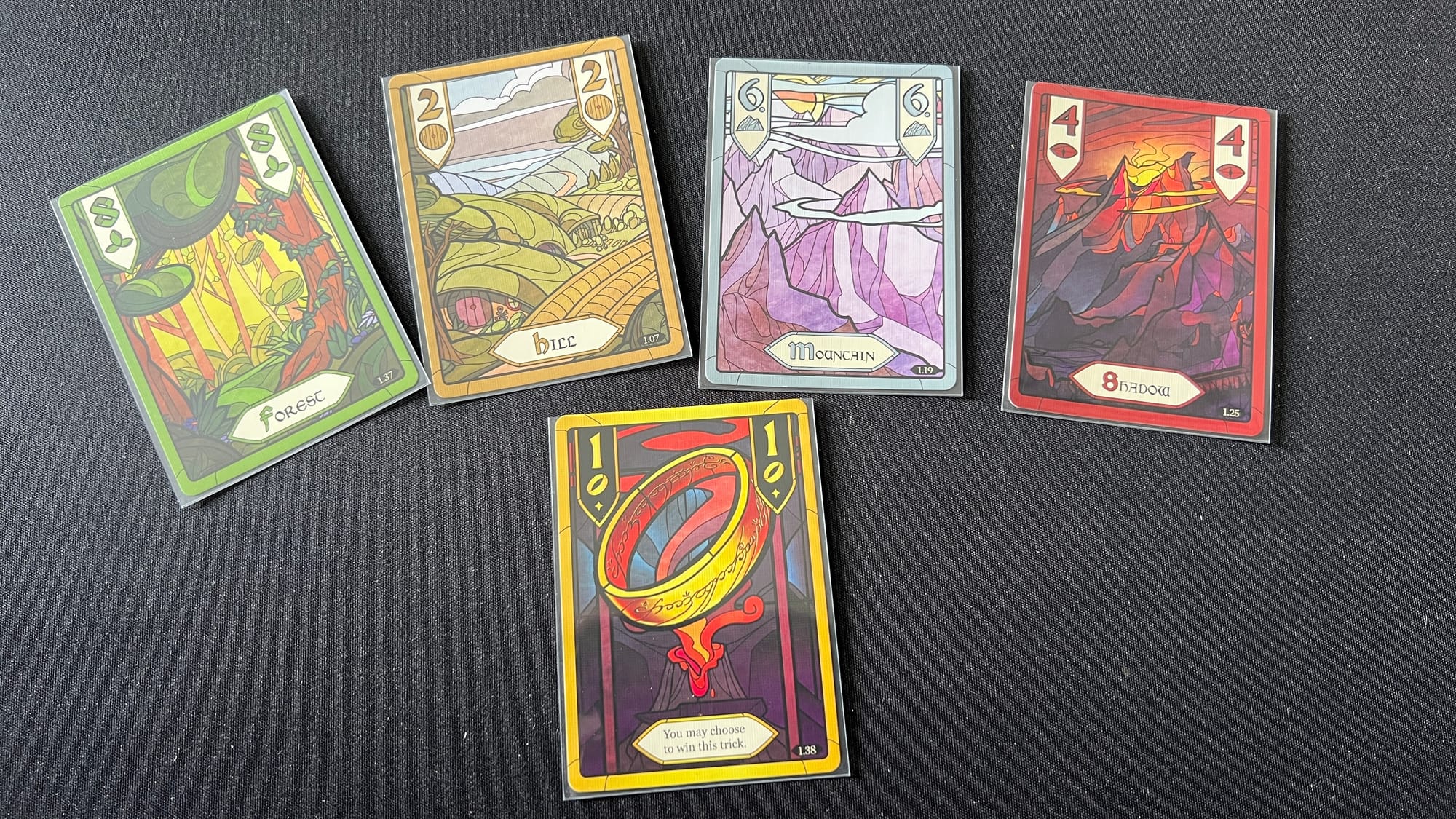
The game deck is divided into four different suits: hills, forests, mountains, and shadows, each featuring a card with values 1-8. The Ring suit is the fifth suit and has cards valued 1-5. Just as in other trick-taking games, the lead player will choose a card from their hand to play, determining the lead suit. In clockwise order, players must play a card of the lead suit if they have one or any card if they do not. The player with the highest played value of the lead suit will win the trick. Unlike other trick-taking games, there is no “trump” suit. However, the ring suit is special. A ring card cannot be led until a player has played a ring into a previous trick. The “One Ring” card is the only card that can win any suit, if the player who uses it wants to.
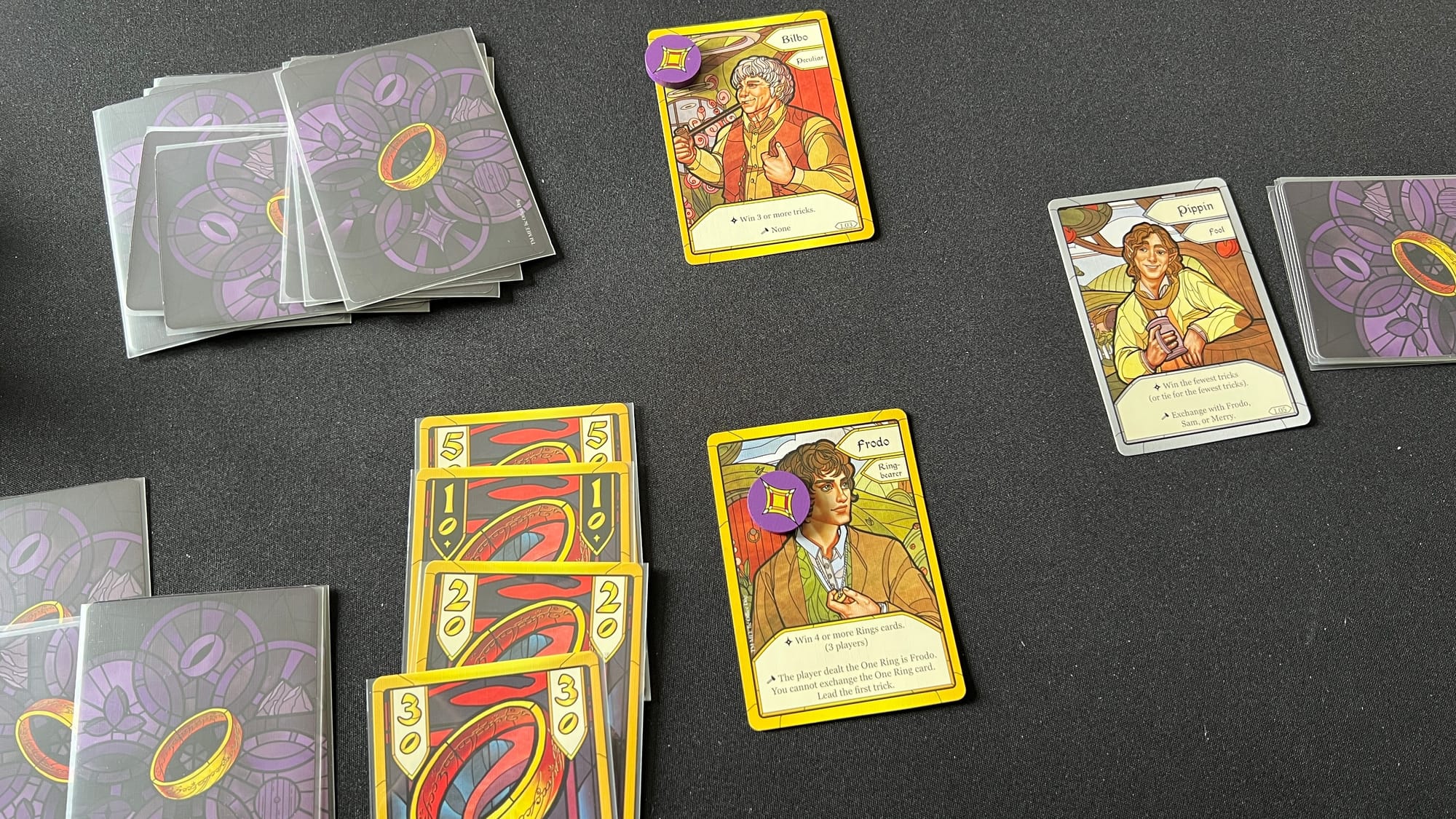
When playing with 3 or 4 players, all cards will be dealt out to the players with one card being omitted as a “lost” card that is not used in the round. The player who gets the “One Ring” card will automatically choose Frodo as their character card. Then in clockwise order from Frodo, each other player will choose a character from those available in the scenario with certain characters required for different chapters. Each character has a different side depending on player count. After choosing characters, players will take their set-up actions that usually involve exchanging cards with other players or drawing a card from a threat deck. The threat deck evolves as the game goes on and is used to dictate certain cards players must win in the round. Players may also receive gifts that can help them when situations seem dire.

With two players, a third non-human player is set-up, controlled by the player with the One Ring. This non-human player is represented by a pyramid of cards with some face-up and some face down cards and is assigned its own character card. Uncovered cards serve as the non-human player's hand and the human players will use the knowledge to help them achieve their goals. In a solo game, players will have four different face up hands with four cards each. Each hand will also have an assigned character. The solo player will determine how each hand plays a card to the trick trying to accomplish all four character goals for the round. After each trick, a new card is randomly dealt to each hand, adding some mystery to the gameplay.
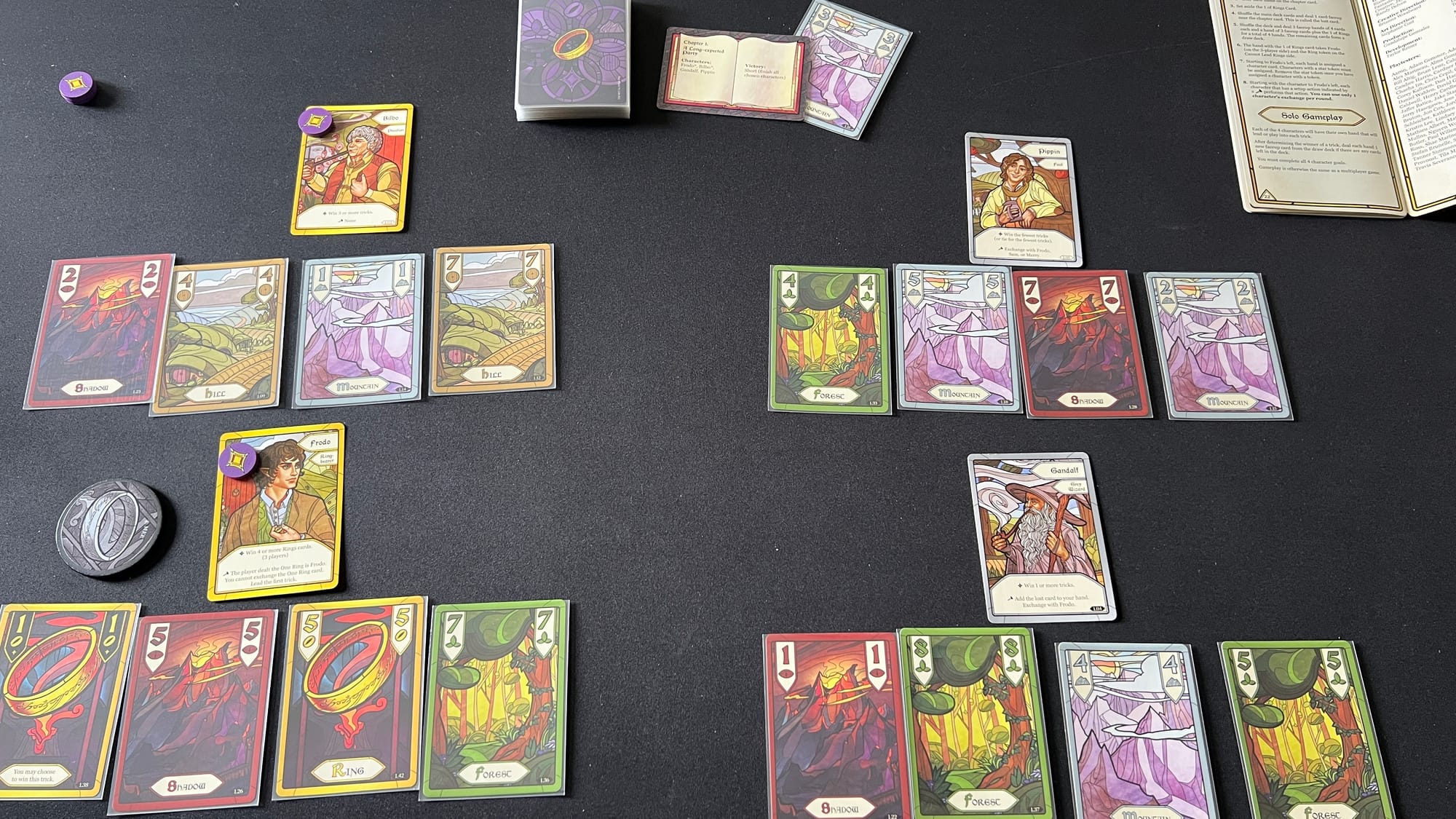
As with other cooperative trick takers, communication is limited throughout each round. Players are unable to discuss cards in their individual hands or give hints as to what cards should be played. How many chapters are played in a given session is up to the players. Each chapter has a short or a long victory condition. A short victory is achieved by meeting the goals of the chosen characters for the round. However, in a long victory, players must play multiple rounds to achieve the victory conditions of all characters listed on the chapter card. Once players have met the conditions of one group of characters, they will set them aside and choose another group to play. After players have completed the 18 chapters, a module, aptly named “The Road Goes Every On…” details variable set-up conditions, allowing characters from other chapters to be brought into different scenarios.
Overall Thoughts

The production of this game is absolutely stunning. The artwork is all done in a stained glass window motif that highlights different aspects of the suits and characters. Artists Elaine Ryan and Samuel R. Shimota weave different colors throughout, adding an immersive wonder to the gameplay experience. The packaging comes in a small box with three different compartments, allowing for easy storage. Another nice touch is the inclusion of ribbons in the card compartments to help remove the cards from the box. Apart from cards, the game comes with 5 special tokens and a rule book. 4 tokens are used to mark characters that must be chosen in a given chapter and one larger token features a graphic of the one ring and is used to indicate when rings have entered the game and can then be led. The rule book is concise and easy to follow. The book starts with the basics needed to play through the introductory first chapter and allows you to experience the game before throwing in further rules. The outlines for the various player counts and variable gameplay are also easy to follow. My only downside for the production is the card quality. After one game, cards showed some signs of wear and tear and warping. This was easily fixed by sleeving the cards, but one might expect some higher quality from cards that will be handled and shuffled constantly.
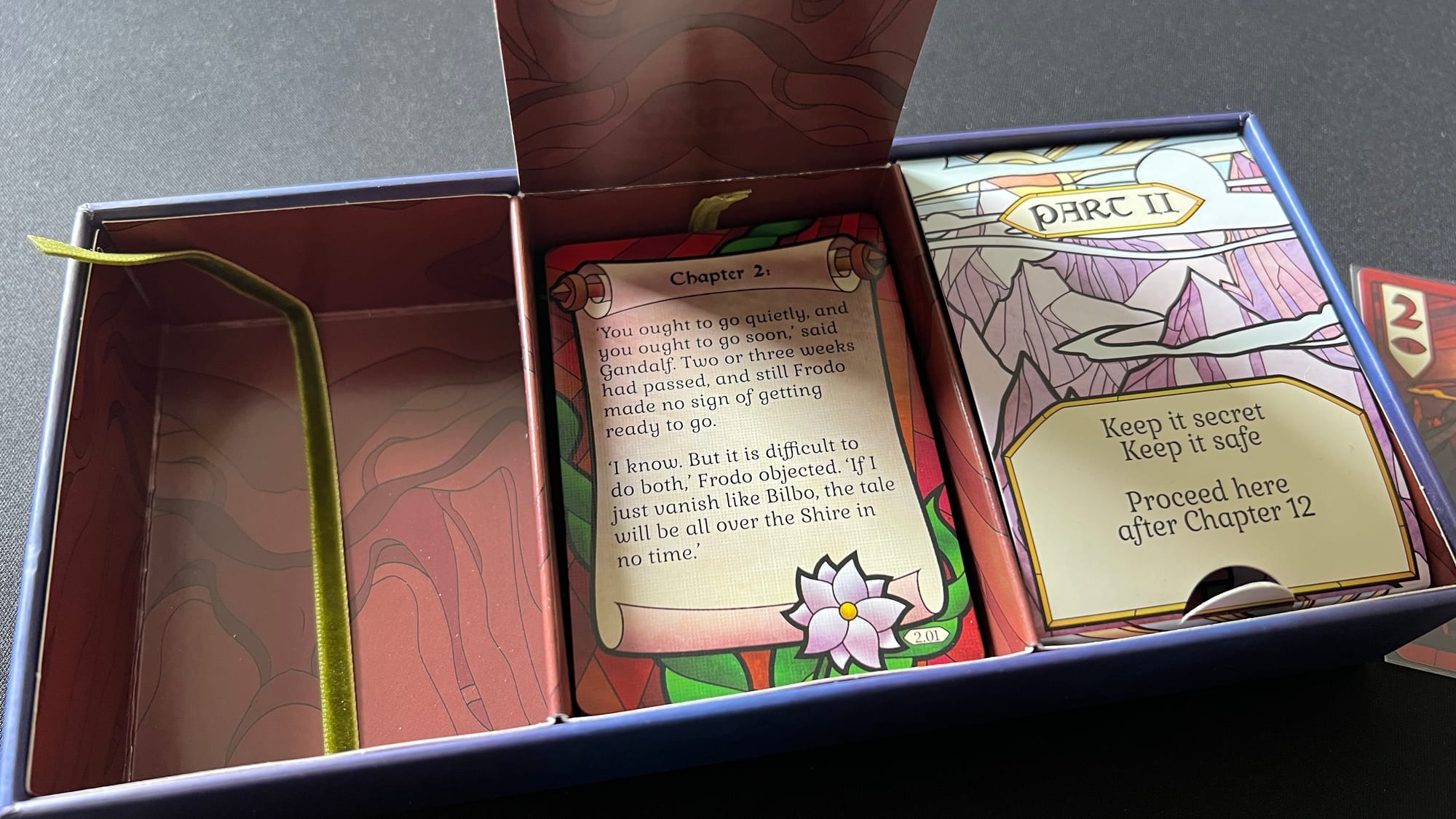
The gameplay is also stellar. Even though we have seen countless riffs on the trick-taking game in the past few years, this game felt like a fresh take on a saturated market. One thing that it has going for it that many trick takers do not is an engaging solo and two player mode. Each session felt like a new puzzle and allowed for different experiences with varying levels of public information. The 3-4 player experience felt much more like a traditional trick-taker experience but still fun, nonetheless. As a huge fan of the Lord of the Rings world, it was fun to see the story woven through each of the chapters. Classic characters such as Fatty Bulger and Goldberry that may seem like an afterthought in the modern adaptations, get their time to shine with their own character cards and goals. The game is also portable and doesn’t require a lot of set-up or a high bar for rules. A quick round of Chapter 1 serves as a great introduction, and then players can easily jump into the story at any point. Each chapter only takes 5-10 minutes to play so a session can be as long or as short as the group dynamic has appetite for. As this game only takes adventurers through a third of the story, the team has an amazing opportunity for long term success.
The Fellowship of the Ring: Trick-Taking Game
Excellent
The Fellowship of the Ring: Trick-Taking game is a faithful and beautiful journey into the world of Middle-Earth. With a low barrier to entry, this is a fantastic introduction to trick-taking for the uninitiated, and a strategic experience for those who are fans of the genres.
Pros
- Gorgeous stained glass window artwork
- A masterful working of the story and theme throughout the game
- 2-Player and Solo Trick-Taking gameplay is solid
Cons
- Card quality requires sleeves for lasting gameplay
- Why did they have to stop with Fellowship?
This review is based on a retail copy provided by publisher.
